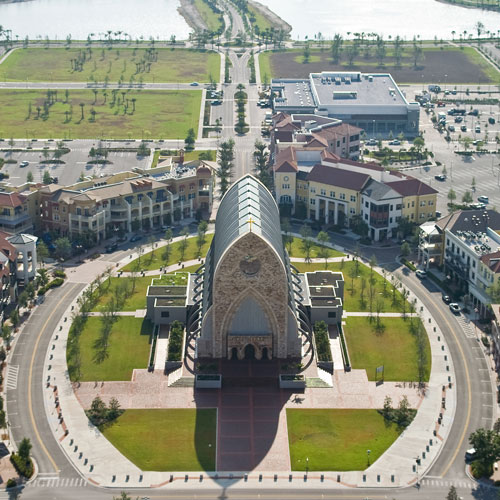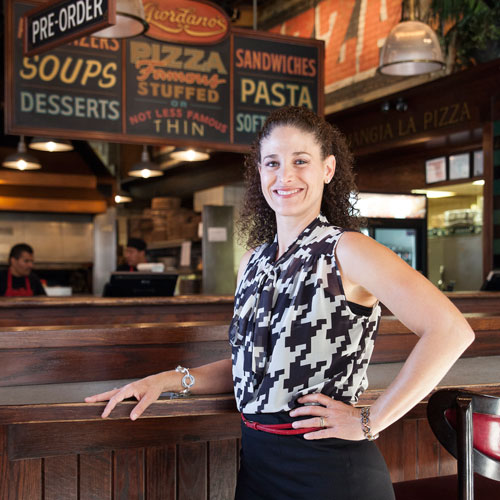
Rick Schaden and Tom Ryan had a simple vision when they founded Denver-based Smashburger in 2007: make a better burger and offer a better experience. Since then, the enterprise has been a whirlwind.
“Stepping into my car at the end of the day feels like exiting a wrinkle in time because what I did over the past 8–10 hours is a blur,” says Jim Ernster, vice president of construction for Smashburger, which has grown to 280 locations in less than seven years, making it the fastest-growing fast-casual restaurant chain in America. The company— known for its “smashed-to-order” burgers, made from fresh ground beef smashed on the grill to sear in juices—posted three-year revenue growth of 254 percent as of 2013, putting it at 1,562 on the Inc. 500/5000 list. Keeping up with the construction necessary to sustain Smashburger’s growth has been largely Ernster’s responsibility, and he has been able to manage the task in part because of his company’s efficient education of its franchisees.
Ernster has spent his entire career in the construction industry and has worked with such noted dining concepts as that of Rock Bottom Restaurant & Brewery. He joined Smashburger in 2009, when it had 13 stores, but at its current size and rate of construction, the company is pushing Ernster and his team to build roughly 15 company-owned or franchise locations—ranging from 1,800 to 3,000 square feet apiece—at a time. “And that’s just what’s under construction,” Ernster says. “At any given time, we have plans and bids being reviewed for new stores, conference calls with franchisees, and before we even start building, we have to review and approve the utility and construction portion of the lease agreements, construction documents, and contracts with kitchen-equipment vendors.”
Smashburger’s DIB Franchise-Overview Process
1. Create a preliminary floor plan
2. Review the architect’s site-investigation report and lease documents to create a preliminary budget
3. Review construction documents
4. Work with the franchise group on weekly calls
5. Bid and award the project to a general contractor and all Smashburger vendors
6. Conduct site visits to oversee the general contractor’s construction schedule and progress
7. Obtain the certificate of occupancy from the city, and oversee the general contractor’s completion of the location
8. Turn the location over to operations for stocking and training
Initially, the process is similar between company-owned and franchise locations, with the company operating a program called “development in a box” (DIB) for franchises. It allows franchisees the opportunity to have Ernster’s team build their first two stores, ensuring that they learn how to develop new Smashburger locations with the methods successfully used to build corporate sites. The franchisees pay the associated building fees, but Ernster’s department manages preliminary floor plans, construction documents, and permitting and works with Smashburger’s architects on the design and building of the stores, involving the franchisees all the way up to the point of operation.Ernster has spent his entire career in the construction industry and has worked with such noted dining concepts as that of Rock Bottom Restaurant & Brewery. He joined Smashburger in 2009, when it had 13 stores, but at its current size and rate of construction, the company is pushing Ernster and his team to build roughly 15 company-owned or franchise locations—ranging from 1,800 to 3,000 square feet apiece—at a time. “And that’s just what’s under construction,” Ernster says. “At any given time, we have plans and bids being reviewed for new stores, conference calls with franchisees, and before we even start building, we have to review and approve the utility and construction portion of the lease agreements, construction documents, and contracts with kitchen-equipment vendors.”
The DIB program is a well-oiled machine: once Smashburger’s franchising division has vetted a potential franchisee, that person is brought to the company’s Denver headquarters for a “discovery day.” The franchisee meets with every department in order to gain a thorough understanding of what’s involved in opening a Smashburger location. “We’ll explain how we choose sites, develop a floor plan, create construction documents, choose architects and general contractors, work with cities to get permits, inspect construction, and conduct final walk-throughs,” Ernster says.
The idea is that the franchisees, after finishing two DIB projects, will open more locations and start managing their own construction. Most, being developers with significant industry experience, do, but Ernster remains involved to maintain a sense of uniformity across the brand. “We still review floor plans and construction documents and vet contractors to ensure the franchisee is building our Smashburger prototype and everything is in order financially,” he says.
The process is designed to get franchisees up and operating restaurants as quickly as possible. “Franchisees should be running restaurants, not building stores,” Ernster says. “We’ve built 120 stores over the past five years, so we have the process down.”
What Smashburger is doing is working. This year, the company will open about 70 stores, including 25 company-owned sites, 15 DIB sites, and 30 other franchise sites.



